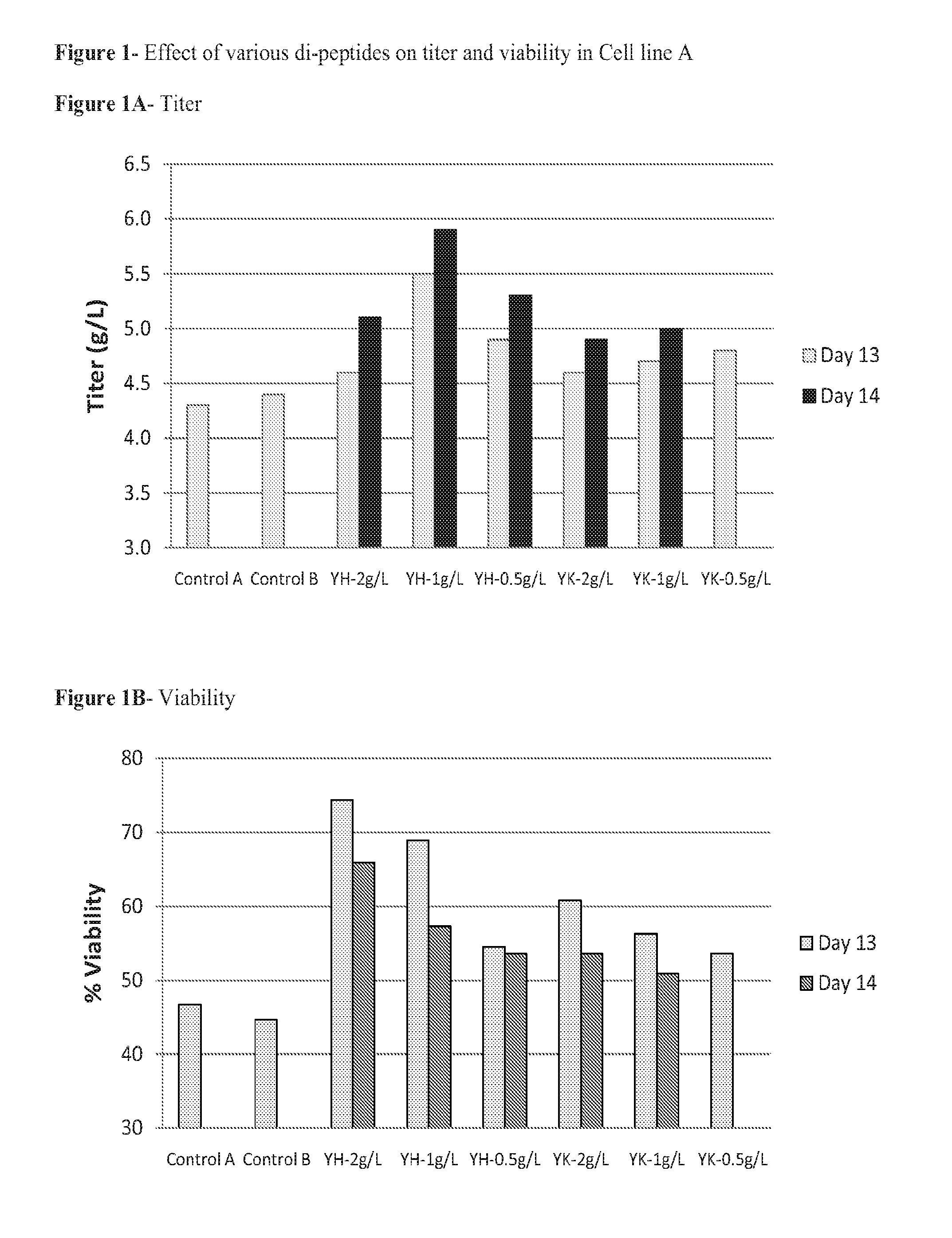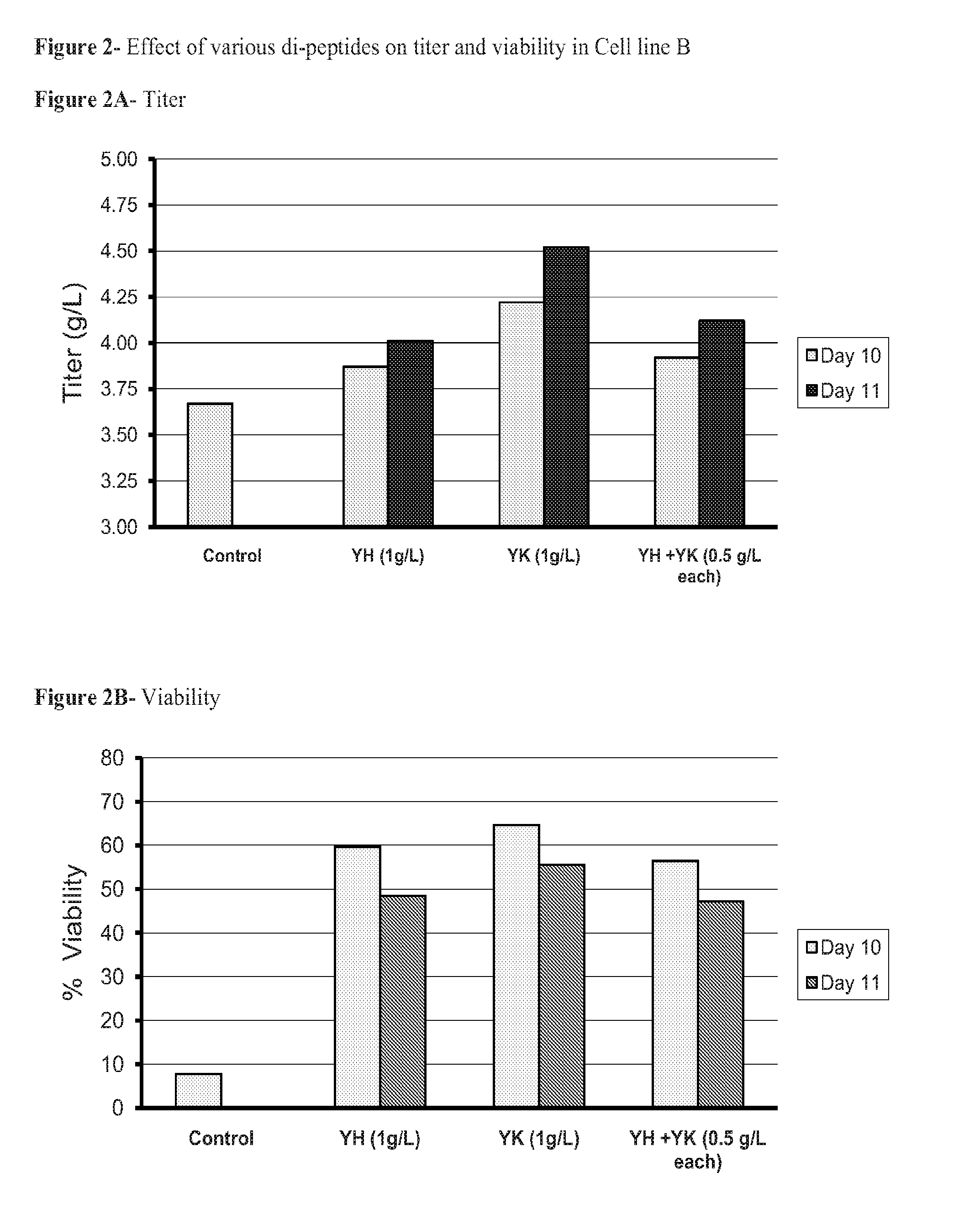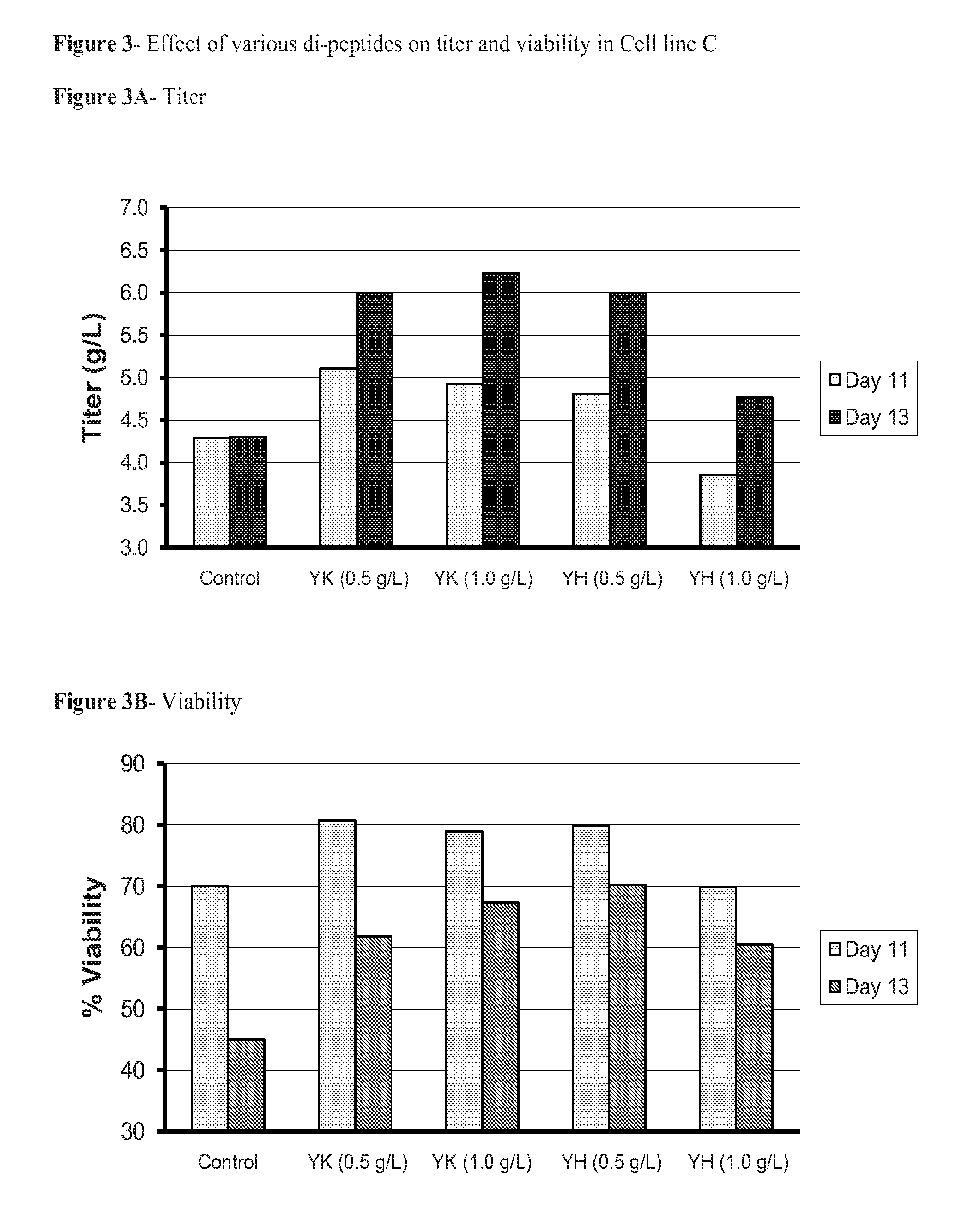Dipeptides to enhance yield and viability from cell cultures
a cell culture and dipeptide technology, applied in the direction of peptides, fused cells, genetically modified cells, etc., can solve the problems of apoptosis adversely affecting the quality and titer of recombinant proteins, remains a source of heterogeneity, and cannot be used in recombinant protein production. , to achieve the effect of enhancing the production of monoclonal antibodies, enhancing viable cell density and viability,
- Summary
- Abstract
- Description
- Claims
- Application Information
AI Technical Summary
Benefits of technology
Problems solved by technology
Method used
Image
Examples
example 1
[0057]Preliminary results using a chemically defined medium indicated that tyrosine appeared to be depleted during the production process for a recombinant antibody. However, tyrosine is a poorly soluble amino acid, so it was difficult to increase the concentration of tyrosine in the medium. Therefore, it was theorized that dipeptides containing tyrosine could be used to replenish tyrosine. Several different dipeptides were tested for solubility as indicated in the following Table 1.
TABLE 1Solu-Solu-bilitybilityTyrpI pI (g / L)-(g / L)-contentDipeptide(#1)(#2)ref. #1ref. #2(g / L)Solubility testedTyr-His6.457.5310056readily solubleTyr-Lys8.169.498143readily solubleAla-Tyr4.845.86561440Difficult to dissolve(takes long time)Met-Tyr4.585.67information not availableNot soluble (white, milky ppt)
[0058]Since Tyr-His and Tyr-Lys were readily soluble under these testing conditions, cell culture experiments were designed to test them as an additive in serum free, peptone-free medium.
example 2
[0059]Introduction:
[0060]In this experiment, Tyr-His and Tyr-Lys were tested as an additive to an enriched defined medium containing IGF-1 and putrescine.
[0061]Materials and Methods:
[0062]Dipeptides were purchased from Bachem (Torrance, Calif.). Each dipeptide was dissolved in water for preparation of concentrated stock solution (100 mg / mL), followed by sterile filtration using Spin-X® filter unit (Corning Inc., Corning, N.Y.).
[0063]On Day 0, prior to inoculation of production cell lines, appropriate volumes of concentrated dipeptide stock solution were added to serum-free defined production medium to bring the final dipeptide concentration at 0.5-2.0 g / L. For controls, the same volume of water was added. Cells were inoculated at 5×105 cells / mL with the final culture volume of 50 mL in 250 mL flasks. The shaker flasks cultures were grown in the incubator at 36° C., with 5% CO2 and agitation rate of 160 rpm.
[0064]Cultures were fed with bolus defined feed media on Days 3, 6, and 8 wit...
example 3
[0072]In a series of in-house peptone fractionation experiments, an attempt was made to characterize or isolate the components in peptones which conferred advantageous properties in cell culture. It was speculated that casein-derived peptides containing the amino acid His may be of interest, and a several different synthetic peptides containing His were chosen for further investigation.
[0073]Materials and Methods:
[0074]CHO cell line D, which produces a fully human recombinant antibody, was used for this experiment. Cells were inoculated at 2×106 cells / mL with a final culture volume of 2.0 mL into serum-free defined production medium. Experimental samples contained the dipeptides His-Glu, Glu-His, His-Ser, and His-Gln from 1 to 4 g / L. Control wells were set up containing either no added dipeptide as a negative control, or containing peptone at 10 g / L as a positive control. The cultures were incubated as a batch culture for 6 days, at which point the cells were harvested and titer and...
PUM
| Property | Measurement | Unit |
|---|---|---|
| concentration | aaaaa | aaaaa |
| concentration | aaaaa | aaaaa |
| temperature | aaaaa | aaaaa |
Abstract
Description
Claims
Application Information
 Login to View More
Login to View More - R&D
- Intellectual Property
- Life Sciences
- Materials
- Tech Scout
- Unparalleled Data Quality
- Higher Quality Content
- 60% Fewer Hallucinations
Browse by: Latest US Patents, China's latest patents, Technical Efficacy Thesaurus, Application Domain, Technology Topic, Popular Technical Reports.
© 2025 PatSnap. All rights reserved.Legal|Privacy policy|Modern Slavery Act Transparency Statement|Sitemap|About US| Contact US: help@patsnap.com



